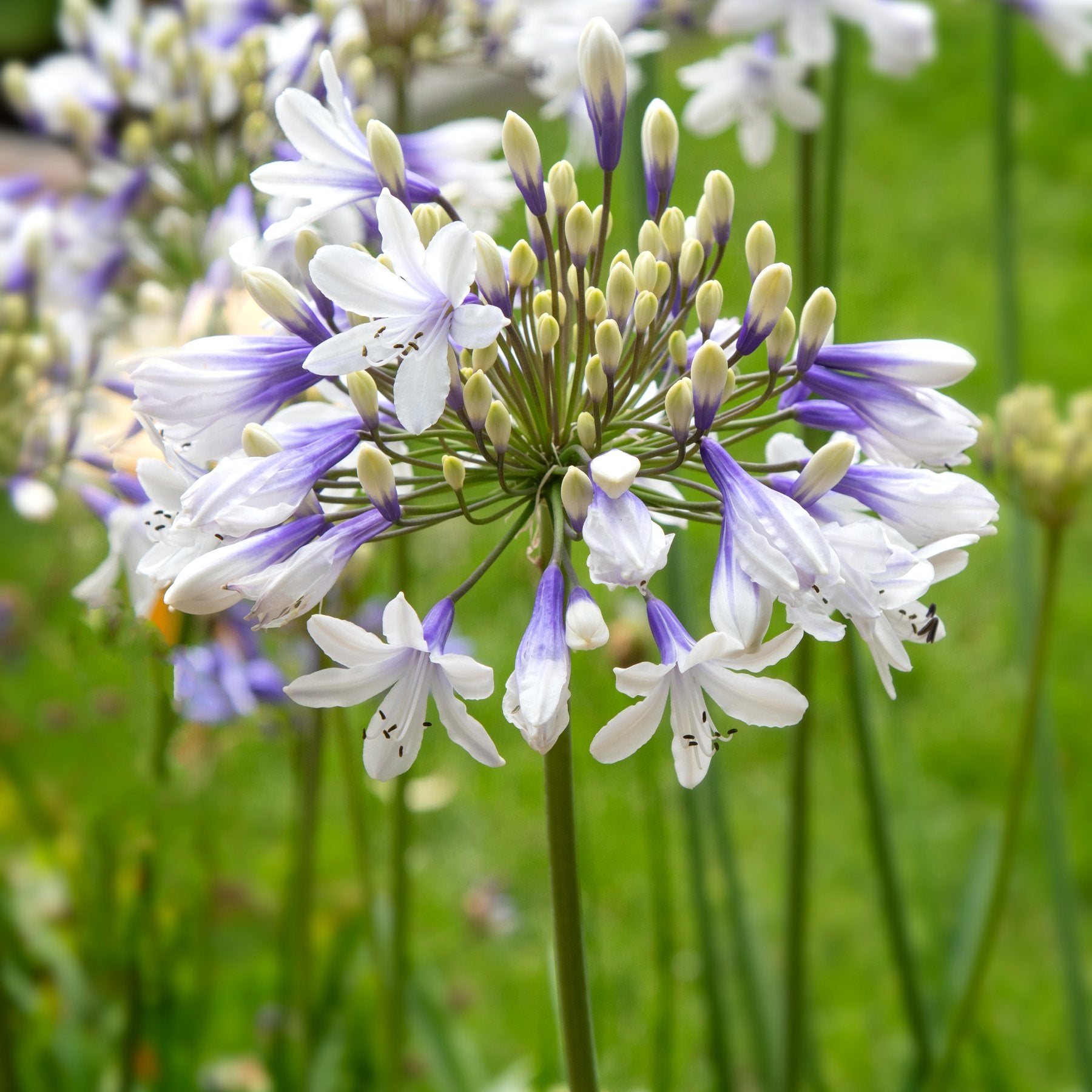Agapanthus Treatment Tips for Lush and Vibrant Flowers
Agapanthus Treatment Tips for Lush and Vibrant Flowers
Blog Article
Understanding the Art of Agapanthus Care: Crucial Steps for Healthy Development and Vibrant Blooms
In the realm of horticulture, the farming of agapanthus stands as a gratifying endeavor for those that look for to support these stylish blooming plants. From selecting the right variety to understanding trimming methods, the journey in the direction of growing prospering agapanthus plants is diverse and holds the key to opening the complete potential of these botanical treasures.

Selecting the Right Agapanthus Variety

When selecting the best Agapanthus range for your garden, think about aspects such as environment suitability, bloom shade, and development habit. Additionally, think about the environment in your area to guarantee the Agapanthus variety you pick can grow in your certain conditions. Understanding the development routine of various Agapanthus selections is essential for correct placement within your yard.
Perfect Planting Problems
Considering the optimal environmental needs is necessary for successful Agapanthus farming. Agapanthus plants are sensitive to chilly temperatures and need to be protected from frost during wintertime months.
To make sure healthy and balanced development and vivid blooms, plant Agapanthus bulbs at a deepness of about 2-4 inches and room them 8-12 inches apart. Including raw material, such as compost, to the dirt can improve drainage and fertility, advertising robust origin advancement. Mulching around the base of the plants assists maintain dampness and subdues weed development. Routine watering is important, particularly throughout the growing period, to keep the dirt consistently wet however not waterlogged.
Watering and Fertilizing Tips
Preserving proper dampness degrees and providing necessary nutrients are key aspects in the care routine for Agapanthus plants. It is crucial to strike a balance when it comes to sprinkling Agapanthus. These plants choose consistently damp soil however are at risk to root rot if overwatered. During the expanding season, water deeply as soon as a week, making sure the dirt is well-draining to avoid waterlogging. In hotter climates or throughout periods of drought, more constant watering might be necessary to keep the dirt uniformly wet. Nonetheless, decrease watering in the winter months to stop waterlogged problems.
Fertilizing Agapanthus is essential for promoting healthy and balanced growth and respected flowers. Use a balanced fertilizer, such as a 10-10-10 formula, in the very early spring as new development arises. Repeat this application every 6-8 weeks throughout the expanding period. Prevent too much fertilization, as it can their explanation lead to rich foliage at the expense of blossoms. Always follow the producer's guidelines for appropriate dilution and application techniques. By adhering to these watering and feeding suggestions, you can ensure your Agapanthus plants thrive and create lively, resilient blossoms.
Pruning Strategies for Agapanthus
Pruning Agapanthus plants at the suitable times and with proper methods is critical for preserving their health and advertising ideal development and blooming. The ideal time to prune Agapanthus is in late winter months or very early spring prior to brand-new growth arises.
Deadheading spent flowers can likewise redirect the plant's energy into creating even more blooms rather than establishing seeds. If you desire to gather seeds for propagation, leave some flowers to completely dry and fully grown on the he has a good point plant.
Remember to utilize tidy, sharp devices to make precise cuts and reduce the threat of introducing diseases. Agapanthus. Normal trimming will assist maintain your Agapanthus looking cool and healthy and balanced while making certain an abundant display screen of beautiful blossoms
Taking Care Of Usual Bugs and Illness
After guaranteeing proper pruning strategies for Agapanthus, it is vital to deal with typical insects and illness that can influence the health and vigor of these plants. Agapanthus plants are normally durable but can still succumb to particular problems. One usual pest that influences Agapanthus is the Agapanthus gall midge. This small, orange fly lays its eggs in the foliage, causing distorted growth and blossom buds that stop working to open. To combat this pest, trim and destroy any affected plant parts and consider utilizing insecticidal soap.
Additionally, Agapanthus plants can suffer from origin rot if they are grown in inadequately draining pipes dirt. By being vigilant and taking timely action versus bugs and diseases, you can aid your Agapanthus plants thrive and generate dynamic blossoms. Agapanthus.

Final Thought
Finally, understanding the art of agapanthus treatment entails selecting the right selection, giving suitable growing conditions, proper watering and fertilizing, proper trimming techniques, and addressing typical insects and diseases. By following these essential actions, you can ensure healthy development and lively blossoms for your agapanthus plants. Keep in mind to on a regular basis keep track of and preserve your plants to advertise their overall wellness and longevity.
To guarantee healthy growth and lively flowers, plant Agapanthus light bulbs at a depth of concerning 2-4 inches and area them 8-12 inches apart. By complying with these watering and fertilizing tips, you can ensure your Agapanthus plants flourish and generate vivid, lasting blooms.
One usual parasite that influences Agapanthus is the Agapanthus gall midge. Additionally, click this site Agapanthus plants can experience from root rot if they are planted in badly draining dirt. By following these crucial actions, you can make certain healthy growth and lively blooms for your agapanthus plants.
Report this page